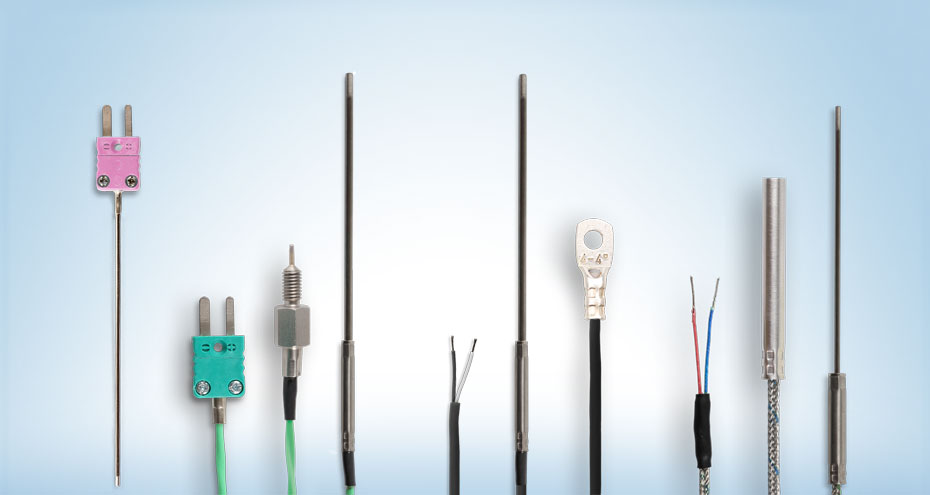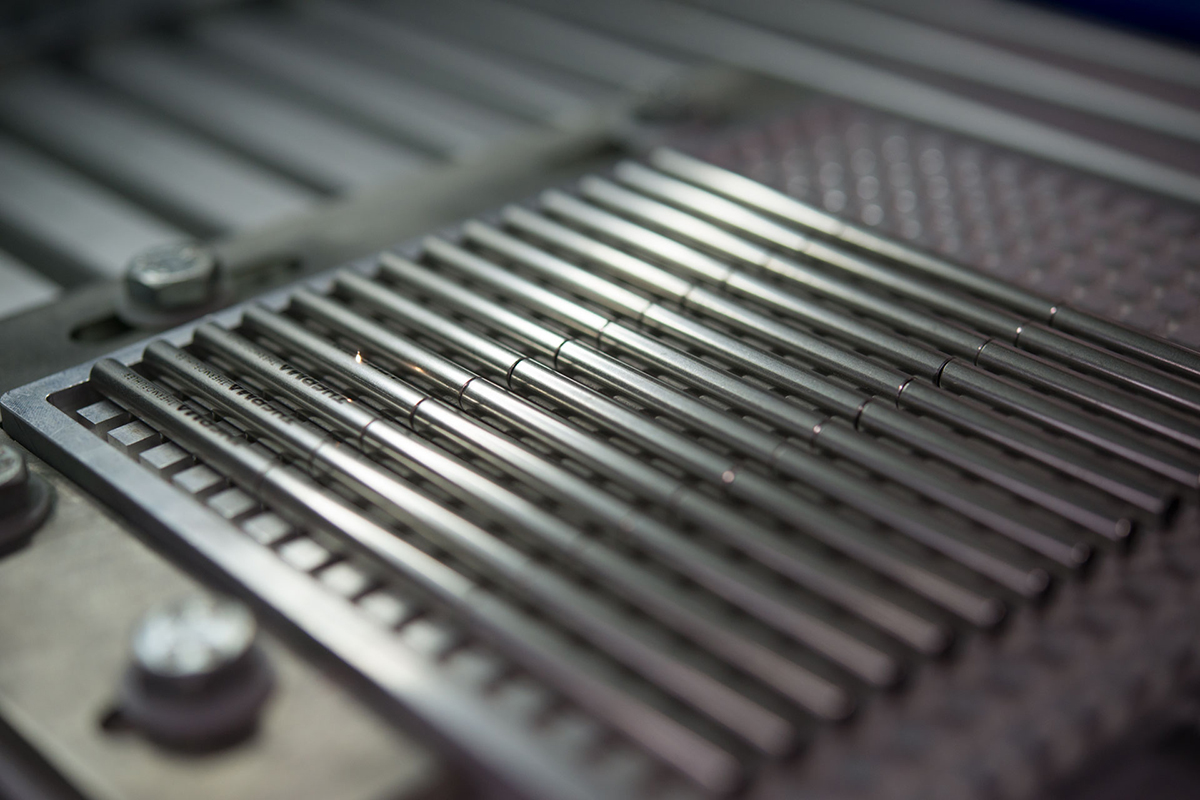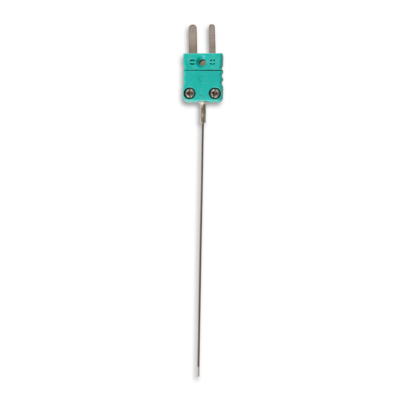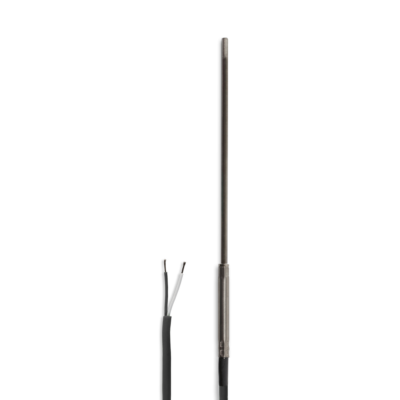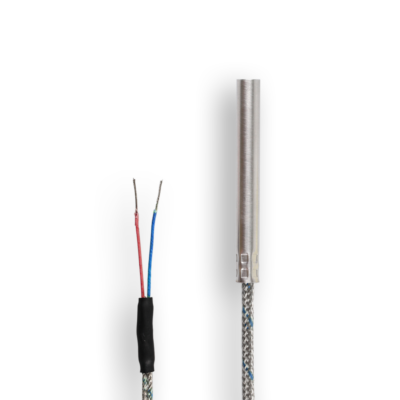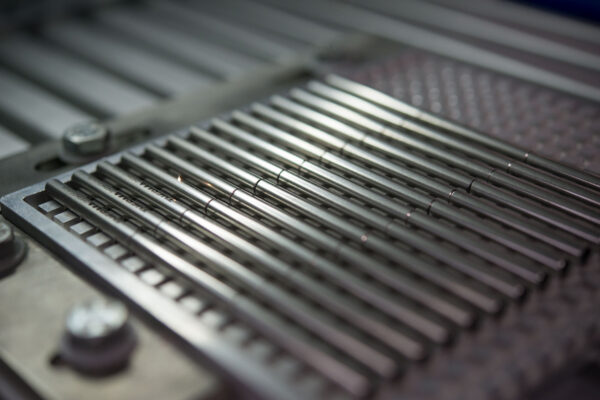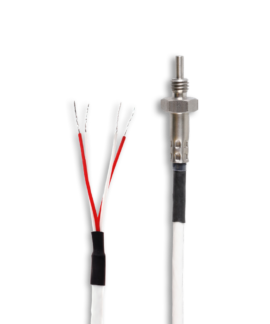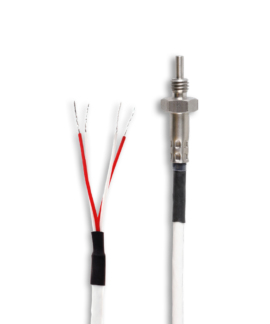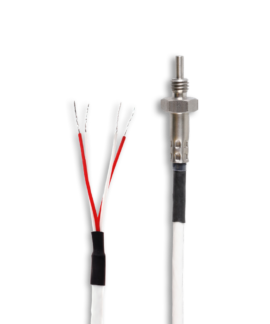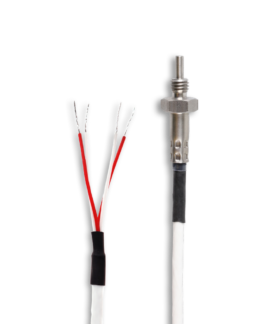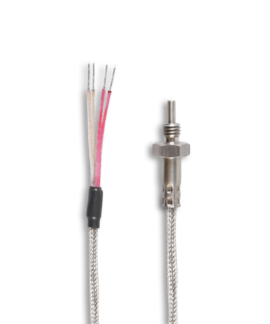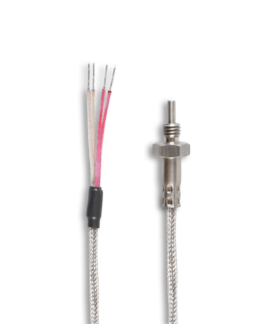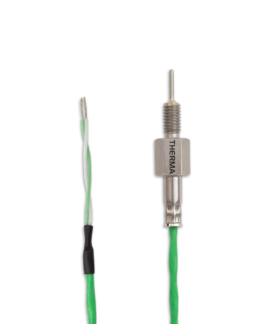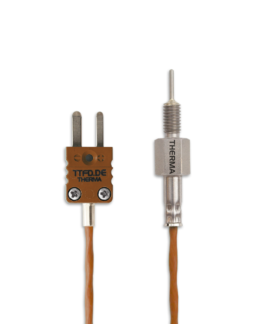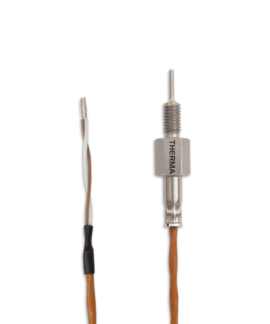Temperature / thermal sensors
Measuring temperature – from Galileo Galilei to us
The human perception of temperature allows us to distinguish between warm and cold, but it is very imprecise and subjective. This is why, at the end of the 16th century, Galileo Galilei set about measuring temperatures. He experimented with the expansion of liquids under the influence of heat and cold and built the first instrument for measuring temperature. He is therefore accredited with being the inventor of the first thermometer. Many different instruments followed, all of which work according to the same principle, albeit without a standardised unit of scale and using different liquids.
The Fahrenheit scale
It was not until 1715 that the Gdansk glass blower Daniel Gabriel Fahrenheit created a mercury thermometer and defined a scale using three fixed points.
- An ice, water and salt mixture served as the zero point. He used this to avoid negative temperatures (approx. -17 °C)
- The freezing point of water is 32° Fahrenheit (0 °C)
- The temperature of the human body is 100° Fahrenheit (approx. 37 °C)
These resulted in reproducible fixed points that could be used to create a standardised scale. The Fahrenheit scale is still used today, for example in the USA. Most countries use the scale devised by Anders Celsius. He defined the scale named after him in 1742 using two fixed points: the melting point of water, 0° Celsius, and the boiling point of water, 100° Celsius.
Kelvin and absolute zero
William Thomson, later to become Lord Kelvin, defined the temperature scale that bears his name in the 19th century based on absolute zero. This is -273.15 °C (0 K). At absolute zero, molecular movement ceases. It is the lowest temperature achievable. The second fixed point was defined in 1954 as the triple point of water, 273.16 K (0.01 °C). At the ‘triple point’, all three physical states – solid, liquid and gas – occur together. Further fixed points are defined using the solidification points of pure metals. One Kelvin corresponds to one degree Celsius.
1 K = 1 °C
Kelvin has been the legally defined SI unit for temperatures since 1968. Its fixed-point temperatures were defined in the IPTS-68 temperature scale. This was replaced in 1990 by the ITS-90 scale, which still applies today, since it allowed the fixed points to be defined with greater precision.
Seebeck and Siemens
In 1821, Thomas Johann Seebeck discovered a thermo-electric effect (Seebeck effect) in metal conductors. He used this to build the first thermocouple. 50 years later, Karl William Siemens unveiled a thermometer that used changes in resistance to measure temperature. The first resistance thermometer he built used the linear, temperature-dependent resistance of the platinum built into it (Pt100/Pt1000). It is on the basis of these discoveries that both resistance thermometers and thermocouples have continued to be improved and optimised over the years.
Images of temperature and thermal sensors
Temperature sensors from Therma – Revolutionize temperature measurement technology for your laboratory and industrial applications
We provide you with the right temperature sensor for every test setup, every industrial process, every measuring environment and every measuring medium, with an individual design, length, diameter and connection configuration. You can choose from different thermocouples and resistance thermocouples depending on your requirements and benefit from our know-how and excellent precision. Buying a temperature sensor does not have to be complicated, take advantage of our more than 30 years of experience in the field of temperature detection and opt for our high-quality, tried-and-tested products. Forward-looking, we sell innovative temperature sensors that use first-class materials to deliver precise measured values in many locations. You can make your choice from the product groups of jacket, jacket-tube, line thermocouples as well as screw-in, surface, plug-in or penetration thermocouples. Each has characteristic properties that can do justice to your mission. Our service is completed by exclusive offers and a large delivery potential that you are welcome to exploit.
Order a temperature probe and enjoy the highest standard of temperature measurement
Since the first temperature sensation, research has always been into methods of precise temperature measurement. It is part of human nature to reproduce every condition in concrete numbers, just like the scientist Galileo Galilei, who designed the first liquid thermometer in the 16th century. This was based on the theory of liquid expansion at different temperatures, which, however, was not given a standardized scale. The first temperature sensor with a scale was created in 1715 with the mercury thermometer by Daniel Gabriel Fahrenheit, which is still used in the USA to this day. Another scale was coined by Anders Celsius only a short time later, in 1742, which is used almost all over the world. Only since 1968 has the temperature scale in Kelvin to the SI units, which is defined by the absolute zero and the triple point of water and has gained scientific importance. Our temperature sensors work according to the principle of the thermoelectric or Seebeck effect, which is created by a charge shift in metallic conductors due to an inhomogeneous temperature field.
The variations of the temperature sensors
A thermocouple basically consists of two metallic conductors that are made of different metals and are connected at the so-called “measuring point” and the reference point. The thermoelectric effect arises from the temperature difference between the two points and develops a measurable voltage between the conductors that is temperature-dependent. The choice of material pair is decisive for the measurement accuracy and the desired temperature range. For example, the most widely used temperature sensor type K consists of the conductor pair NiCr and Ni. The type K thermocouple is therefore a cost-effective solution that can cover a wide temperature range from -100 ° C to + 1,100 ° C. Such a temperature sensor then transmits the measurement signal either with a thermal line or a compensating line from the measuring point to the transducer and can be protected from external influences with different types of insulation (silicone, Teflon, Kapton, PVC or glass fiber). Because a constant reference temperature is necessary. This can be generated, among other things, by a digital temperature sensor that can correct the measured temperature numerically.
The temperature sensor Pt100 and the Pt1000 sensor
In addition to the thermocouples, which consist of different types with the characteristic metal pairings, there are resistance thermometers. A Pt100 sensor is a platinum resistor that changes in a temperature coefficient depending on the temperature. The resistance of the Pt100 temperature sensor increases with increasing temperature, it is very resistant due to its purity and ensures reproducible measurement results. The platinum resistances can be categorized by the nominal value. For example, the Pt1000 temperature sensor has a resistance value of 1000 Ω at 0 ° C. The Pt1000 temperature sensor is also divided into further classes (A, B and AA) to describe the accuracy. This results in the Pt1000 resistance table and Pt100 resistance table, which, depending on the category and class, indicates the assigned temperature value to the measured resistance values. Here, too, there are different designs that are suitable for different locations. For example, the Pt100 screw-in sensor can be used as a water temperature sensor thanks to its pressure-tight installation in a stainless steel housing and its simple and precise installation.
Buy temperature sensors at Therma and acquire quality products and accessories
We at Therma are enthusiastic motorsport fans and also offer the right thermocouples, display devices and additional equipment. When checking coolants, petrol or oil, the temperature sensor must be watertight and, above all, can be easily integrated as a screw-in temperature sensor. Furthermore, temperature sensors with display such as B. the multimeter temperature sensor, with which the temperature monitoring succeeds more efficiently. Like all our products, you will find the perfect accessories for your thermocouples including the compression fitting, extension, mounting adapter and immersion sleeves for temperature sensors in the online shop.
